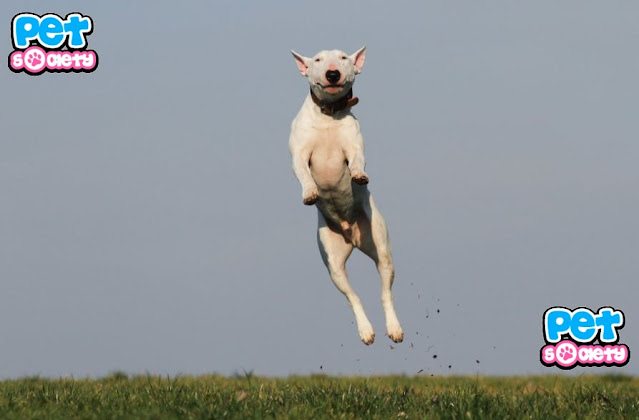How do you train your dog to use the toilet?
 |
HOW TO TRAIN YOUR DOG |
Training your dog to use the toilet
whether this dog is young or adult, it is very likely that there will be some accident to cleaning them. Unfortunately, while it is a simple thing, in theory, training your dog to use the toilet outside can be challenging and a longer process than it should be, especially if you don't have good guidance.
There are many basic steps to follow:
- Keep your own dog with you at all times while toilet training. If you're not watching closely and intently, consider crate training or using a play crate, laundry, or bath as a safe place. And keep going.
- Use appropriate and motivating rewards. This is usually a treat, as most dogs are not motivated enough just with praise or a game. Keep yourself entertained at all times so that you can reward within a few seconds.
- Take your dog outside every hour. Where repetition and consistency are the keys. The more occasions you can reward your dog for appropriate behavior, the faster your dog will learn. If it has been 24 hours since your dog received a reward for the last time in the right place, it will take longer to learn.
- Be patient and coordinated and avoid punishment. Punishing your dog after an accident won't teach him anything, except that you fear. If an accident does happen, move on, and try to get your dog out frequently.
Use absorbent pads.
Many trainers advocate using absorbent pads and placing them on the floor or newspaper, to teach your dog to get to the right place. And once you have a toilet in there, you can start moving it closer and closer to the toilet door. Although successful, you must train the dog to use absorbent pads, then you need to re-teach him outside.
It is easier to go into teaching the behavior you want the first time, rather than teaching two separate things. The main advantage of these absorbent pads is that they make cleaning up a lot easier, so while your dog is confined, in a den, or babysitting, you can place an absorbent pad under the dog to absorb any mess.
Cage training
You cannot be with your dog every second of the day, and your dog needs a lot of rest, usually around 16 hours a day. When you and your dog need a break, send your own dog to bed somewhere this will limit any roaming accidents. For dogs who love to chew on things like power cords, this is a safety precaution that can stop your dog from entering harm when you cannot watch them.
If your dog will need to travel frequently or be confined to when visiting guests or during the night, you can also consider using a large transport crate so that it is "your dog." In a safe, comfortable place but large enough for him to easily walk around and fall asleep in his comfort.
The use of kindergarten, pets, or children's gates across the entrance can have a similar effect. The added benefit is that in a smaller area, your dog will either learn to "continue" to avoid the toilet in his comfortable "cage", or at least choose a location further from his bed to the toilet. Once you let your dog out of the crate, take her to the toilet area, and do not keep the dog confined for long periods of time.
How do I know my dog needs a toilet?
Young dogs need the toilet more frequently than adult dogs. They have little bladders and do not have an instinct for endurance. Older dogs usually need a toilet after waking up, or 10-20 minutes after eating, drinking, and playing, and sometimes after they are outside. Don't assume your dog will go to the toilet outside unless he learns how to do so.
You may only need to take your adult dog outside for two hours, while a small dog needs to take him outside every hour to avoid mistakes. Some of the early warning signs of needing to urinate or have a bowel movement are spinning and breathing ground. It is easiest to catch when your dog needs the toilet if you are closely watching or the dog is on the lead with you at all times.
Additional tips
Set the alarm. During the early stages of training, set a timer on your phone or an alarm to remind you to take your pooch or adult dog every hour or two. If accidents happen, increase speed. This is the key to training your dog in 3 days. Repetition is the key.
Use a leash or rope. One of the best ways to make sure your dog stays with you so that you can monitor his eyes is to attach him to your harness or tie him to your chairs if you are working around the house. If your dog is walking around freely, fortunately, you won't see him show these early warning signs of needing to go outside.
Provide an efficient word. To encourage toilet use while driving, it doesn't take a lot of extra work to enter a word while your dog is urinating or defecating. Therefore, when the dog begins to use the toilet, it is reported to use a whistle (or input a hand signal) until the behavior is paired with the command. This means on those cold winter nights, or during toilet breaks on long road trips, you have a way to quickly get your dog to urinate or defecate.
- dog obedience training
- hunting dog training
- german shepherd
- Jason smith
- David Weston
- Amy amen
- how to train your dog
- how to train a dog


